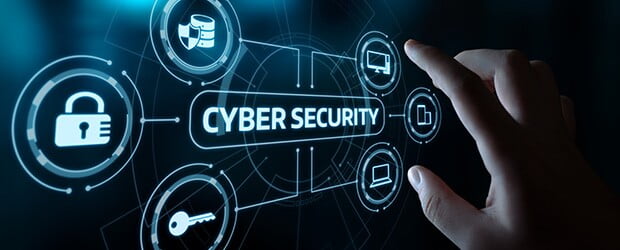
Cybersecurity
Cybersecurity, or information security, involves the protection of computer systems, networks, and data from theft, damage, unauthorized access, and other cyber threats. As technology advances, cybersecurity becomes increasingly crucial to safeguarding individuals, organizations, and governments from cyber attacks. Here are key components and concepts related to cybersecurity:
Information Security:
The overarching goal of cybersecurity is to ensure the confidentiality, integrity, and availability of information.
Cyber Attacks:
Deliberate actions to exploit vulnerabilities and compromise the security of computer systems. Attacks can be launched for financial gain, espionage, disruption, or other motives.
Risk Management:
The process of identifying, assessing, and mitigating risks to an organization's information assets. It involves balancing the need for security with business objectives.
Intrusion Detection and Prevention Systems (IDPS):
Systems that monitor network or system activities for malicious activities or security policy violations. They can detect and respond to potential threats in real-time.
Authentication and Access Control:
Verifying the identity of users and controlling their access to computer systems or data. Strong authentication mechanisms, such as multi-factor authentication, enhance security.
Incident Response:
A structured approach to addressing and managing the aftermath of a cyber incident. It involves identifying, containing, eradicating, recovering, and learning from security incidents.
Endpoint Security:
Protecting individual devices (endpoints), such as computers and mobile devices, from cyber threats. It includes antivirus software, endpoint detection and response (EDR), and device encryption.
Penetration Testing:
Ethical hacking conducted to identify vulnerabilities in a system or network. Penetration tests simulate real-world cyber attacks to assess the security posture of an organization.
Zero Trust Security Model:
A security model that assumes no trust, even among users inside the organization's network. It emphasizes continuous verification and strict access controls.
Cyber Threats:
Malicious activities and risks that can harm computer systems and networks. Common threats include malware, phishing, ransomware, and denial-of-service attacks.
Vulnerabilities:
Weaknesses in computer systems, software, or configurations that can be exploited by attackers. Regular vulnerability assessments are conducted to identify and address weaknesses.
Firewalls:
Network security devices that monitor and control incoming and outgoing network traffic based on predetermined security rules. Firewalls help prevent unauthorized access and protect against cyber threats.
Encryption:
The process of converting data into a secure format to prevent unauthorized access. Encryption is used to protect sensitive information both in transit and at rest.
Security Policies and Procedures:
Establishing and enforcing security policies and procedures to guide employees and users in maintaining a secure computing environment.
Security Awareness Training:
Educating employees and users about cybersecurity best practices, recognizing phishing attempts, and understanding the importance of security in daily activities.
Security Information and Event Management (SIEM):
A solution that provides real-time analysis of security alerts generated by various hardware and software. SIEM helps organizations detect and respond to security incidents.
Cybersecurity Frameworks:
Frameworks such as NIST Cybersecurity Framework, ISO/IEC 27001, and CIS Controls provide guidelines and best practices for organizations to establish and improve their cybersecurity programs.
Blockchain Technology:
Used for securing transactions and data through decentralized and tamper-resistant ledgers. Blockchain enhances the integrity and transparency of digital transactions.
Cybersecurity is an ongoing and evolving field that requires continuous adaptation to new threats and technologies. It involves a combination of technology, processes, and user awareness to create a robust defense against cyber threats. Organizations need to adopt a holistic and proactive approach to cybersecurity to mitigate risks effectively.

